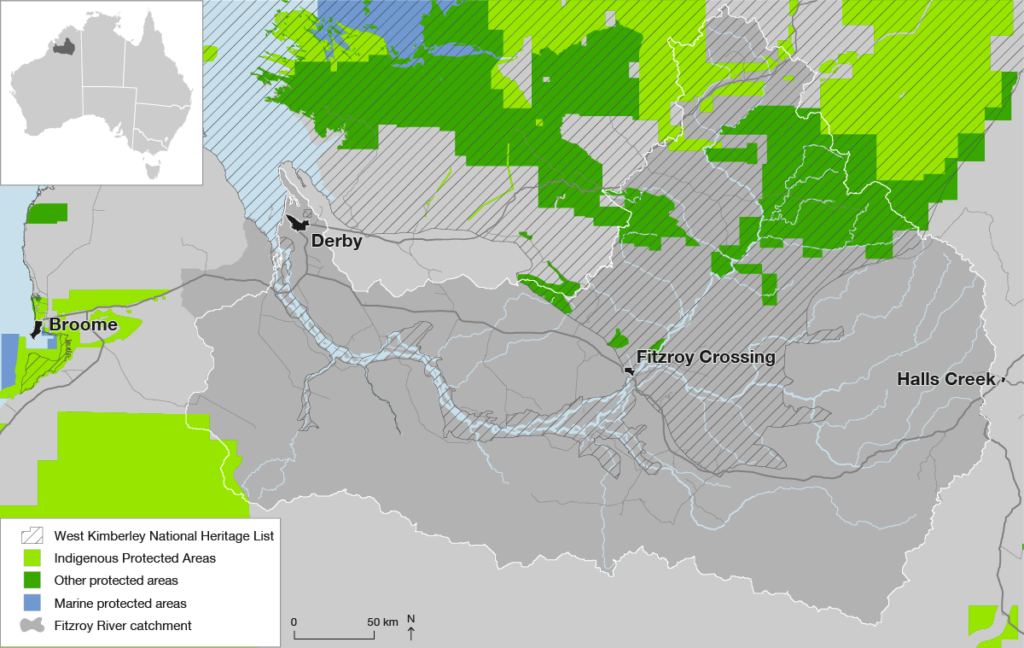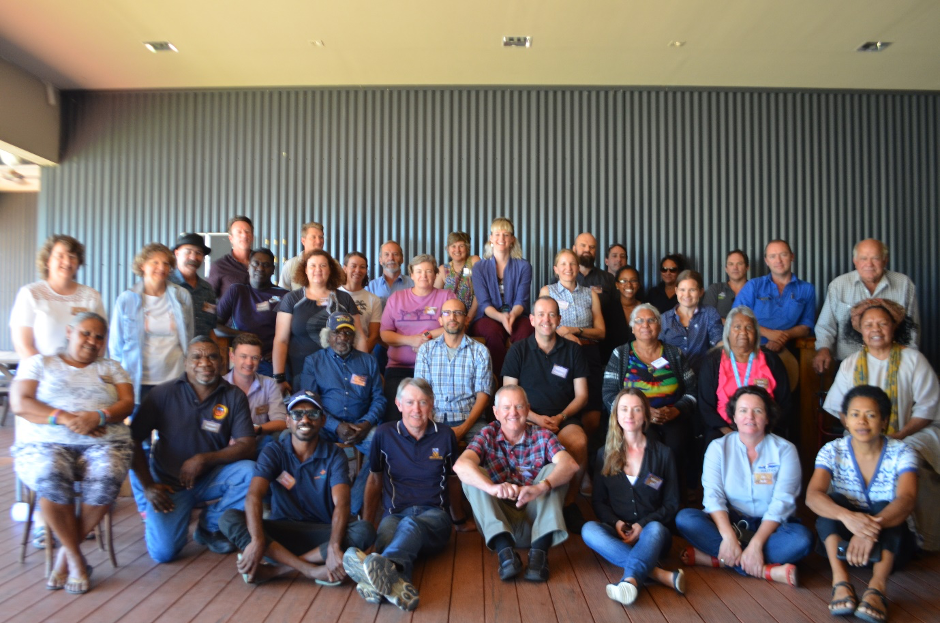We wish to acknowledge the Traditional Owners and Custodians of the Martuwarra (Fitzroy River) catchment, the Bunuba, Giniyjawarrni Yoowaniya Riwi, Gooniyandi, Jaru, Kurungal, Ngarrawanji, Nyikina Mangala, Warrwa, Yi-Martuwarra Ngurrara, Wilinggin, Yungngora, and Yurriyangem Taam peoples.
There are various development plans for the Fitzroy River catchment in Western Australia’s Kimberley region. Proposals for new developments include irrigated agriculture, increasing livestock production, carbon farming, extraction of mineral resources, nature and cultural tourism and many others. But how do we balance increased productivity, traditional uses and nature conservation? We are at an intersection where major decisions (from local to national levels) will be made regarding the future use of land and water resources. This requires a conversation about different development pathways for the region.
Making good decisions requires exploring possible development options and having a sound understanding of their social, economic and environmental outcomes. It also requires identifying the broader social, economic and political environment that could facilitate or hamper different development options.
A critical examination of the possible futures of the region can support effective planning for development and conservation of the region’s nationally and globally significant cultural and natural values.
To support these discussions, this project guided a participatory scenario planning exercise to construct and assess the outcomes of alternative development scenarios. Major components of this exercise included exchanging views about development, imagining possible futures and exploring their potential outcomes. This information sheet explains key aspects of the scenario planning process and main outputs of the process.
Goal of scenario planning
The scenario planning exercise aimed to create a shared space for constructive and objective conversations about the future development of the Fitzroy River catchment. Through this process the project contributed to developing common understandings about different development options for the region and systematically explored the possibilities, as well as the potential outcomes, of different development trajectories.
What are scenarios?
Scenarios are narratives or stories that consider how alternative futures might unfold. In this case, they allowed Traditional Owners and stakeholders of the region to consider and discuss their perceptions and aspirations for the future, as well as explore opportunities and risks associated with different pathways. Examples are the environmental, social and economic outcomes associated with alternative land and water use options. The main goal of creating the scenarios was to help everyone understand key uncertainties about the future, as well as opening up thinking about the need for change.1
Why scenario planning?
Constructing scenarios allows people with diverging opinions to see the world from the point of view of those with different perspectives. In this project, they allowed participants to think not only about scenarios that they accept, but those that they reject. The process also aimed to change understandings and intentions, create empathy and build trust, which together can lead to changes in individual and collective actions that will shape the future.
Participatory scenario planning is useful when different people and organisations see the situation they are in as unacceptable, unstable or unsustainable (now or in the future), but disagree over what the future should look like. In this case, it was clear that individual groups could not transform the situation on their own or by working only with allies or like-minded people. Finally, the broader social, economic and political system was too complex, had too many interest groups and was too highly unpredictable for a single group or individual to understand and shape.
Through scenarios, people can see possible futures they are not willing to accept because they continue an unacceptable present, destroy an acceptable present, or fail to realize the potential of the present.2
Who participated?
Following the identification of key interest groups in the region and discussions with local organisations, researchers assembled a scenario planning team. The team included people with varied backgrounds who understand the perspectives of one or more key groups (e.g. Traditional Owners, pastoralists, government, mining industry) and organisations with a stake in the region. It included people from organisations making or influencing decisions about land use and management in the catchment.
The team included people with knowledge and expertise in areas such as the cultural and natural values in the catchment, land-use planning, agriculture, water management, tourism, mining, enterprise planning and service provision, among others. The team was small enough to allow effective discussions, thus workshops were limited to 40 people (30 organisations), including five researchers, two professional facilitators and the Regional Research Coordinator.

The Fitzroy River catchment in the Kimberley region, Western Australia.

There are various development plans for the Fitzroy River catchment in Western Australia’s Kimberley region. Proposals for new developments include irrigated agriculture, increasing livestock production, carbon farming, extraction of mineral resources, nature and cultural tourism and many others. But how do we balance increased productivity, traditional uses and nature conservation? We are at an intersection where major decisions (from local to national levels) will be made regarding the future use of land and water resources. This requires a conversation about different development pathways for the region.
There are various development plans for the Fitzroy River catchment in Western Australia’s Kimberley region. Proposals for new developments include irrigated agriculture, increasing livestock production, carbon farming, extraction of mineral resources, nature and cultural tourism and many others. But how do we balance increased productivity, traditional uses and nature conservation? We are at an intersection where major decisions (from local to national levels) will be made regarding the future use of land and water resources. This requires a conversation about different development pathways for the region.
The project is being led by Professor Bob Pressey from James Cook University (JCU). Professor Pressey is being assisted by researchers from JCU, The University of Western Australia, Griffith University, CSIRO, and University of Tasmania.
This project is due for completion in June 2021.
Contact
Bob Pressey, JCU: bob.pressey@jcu.edu.au or 0418 387 681
Jorge G. Álvarez-Romero, JCU: jorge.alvarezromero@jcu.edu.au or (07) 4781 6517

![]()
![]()

![]()